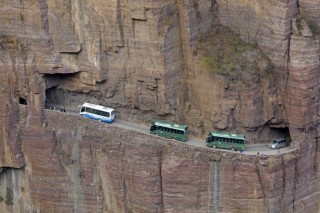Slowly Forming
Mountains on Earth are the product of natural geological forces, and the formation process requires long and complex geological activities.
The formation of mountains is closely related to plate tectonics and crustal movement.
The following will explore the formation of mountains on Earth and why there are no new large mountains formed in modern times.
The formation of mountains is often associated with the collision and uplift of plate tectonics. Earth's outer layer is made up of large plates that move relative to each other in tectonic movements.
When two plates collide, the rock between them deforms and compresses, causing the crust to bulge. This compressive force causes layers of rock to fold and fault, eventually forming mountains.
During the collision of two plates, two main types of plate boundaries exist tectonic boundaries and subduction zones. A tectonic boundary occurs when two plates collide and lift up.
In this case, the rocks between the plates are compressed strongly, forming folds and faults that eventually form mountains. For example, the Himalayas are the result of the collision of the Indian plate with the Eurasian plate.
Another type of plate boundary is a subduction zone, which occurs when one plate subducts into another. When a plate subducts, rocks that occur in the subduction zone are subjected to high temperatures and pressures, forming magma.
The rise of magma causes the crust to rise and create volcanoes and chains of volcanoes on the surface. Volcanic eruptions build up lava and pyroclastic deposits, which build up over time to form large volcanic mountains. The Andes and the Cascade Mountains are formed by the subduction of plates.
However, why are there no large newly formed mountains in modern times? This is mainly related to the evolution of plate tectonics and crustal movement on the Earth. Earth's plate tectonics is a relatively stable system in which the relative motion of the plates is relatively slow. The formation of large mountain ranges requires long-term evolution and the process of plate collisions.
Over the past few million years, many large mountain ranges have formed, such as the Himalayas, the Alps, and the Andes. These mountains have gone through a long geological process to reach their present height.
In addition, the modern crustal movement is relatively smooth, and there are relatively few collisions between plates. While some active seismic and volcanic zones still exist, the formation of new large mountains requires more intense and frequent crustal movements.
Currently, most of the plate boundaries on Earth are in the oceans, not on land. Oceanic plate boundaries are mainly dominated by seafloor spreading and subduction, and the geological structures formed are generally small, making it difficult to form large mountain ranges.
To sum up, large mountains on Earth are formed through long and complex geological processes, which are closely related to plate tectonics and crustal movement.
Due to the relatively stable plate tectonics of the modern Earth, relatively few plate collisions and crustal tectonic activity have resulted in a low number of newly formed large mountain ranges.
However, despite the fact that no new large mountains have formed in modern times, the mountains that already existed on Earth still provide magnificent natural landscapes and rich geological history.
You may like:



